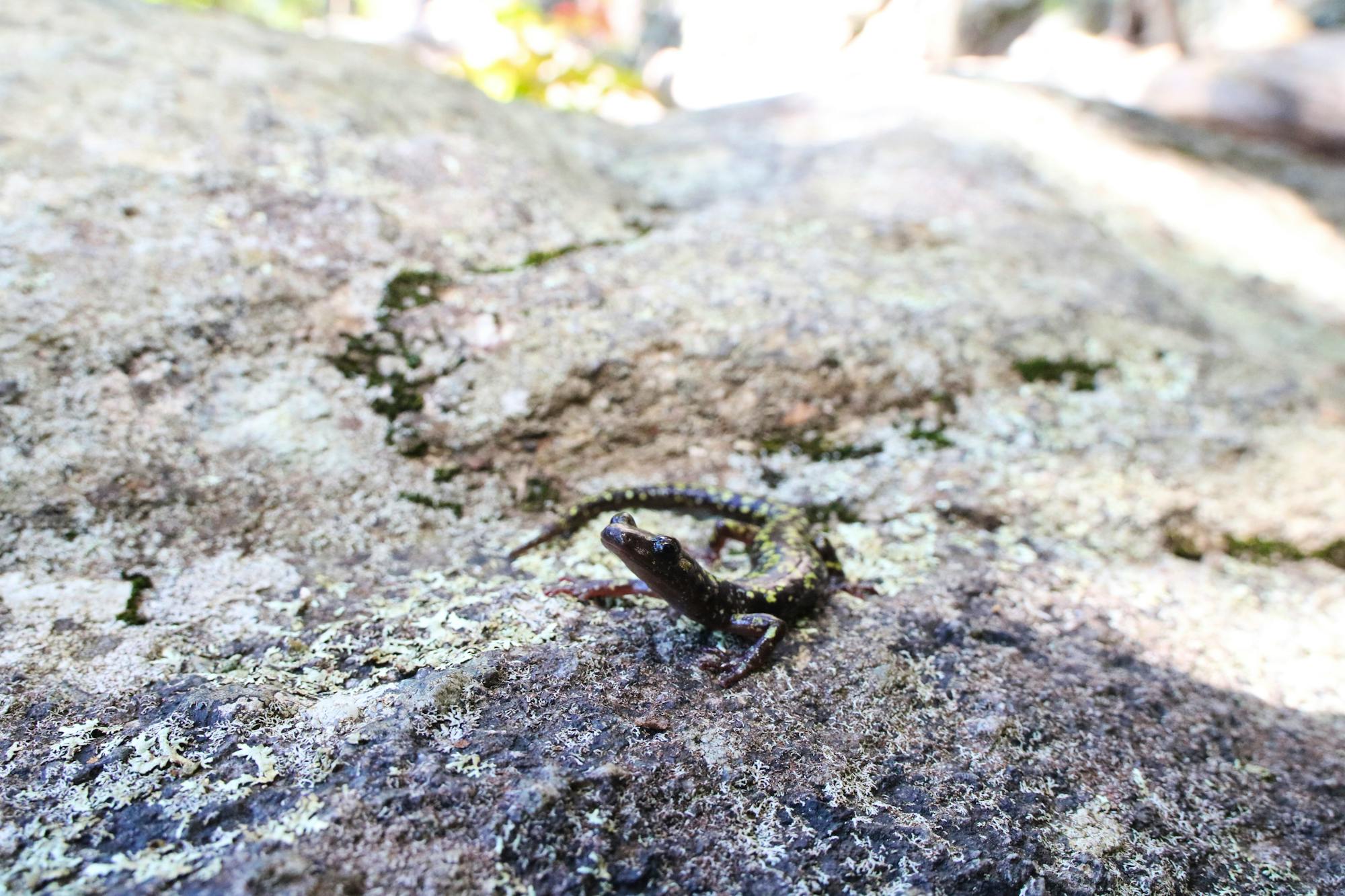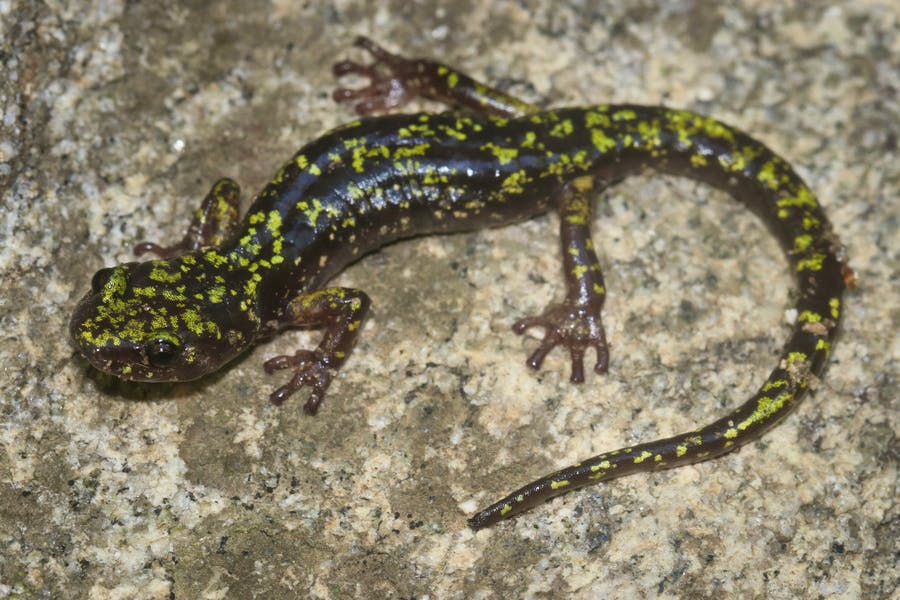After record rainfall from Hurricane Helene soaked western North Carolina over a three-day period in late September 2024, the mountainous terrain gave way to some 1,500 to 2,000 landslides. The added winds helped distinguish this as one of the most devasting weather events in NC’s history. As recovery efforts continue into spring, wildlife biologists are preparing to explore the impacts on habitat and wildlife populations. Of greatest concern is the fate of endemic species.
Endemic species are species found in very specific areas and nowhere else on Earth. NC is home to 42 endemic and near-endemic plants, and approximately 20 known endemic animals. One animal near and dear to our hearts, the Hickory Nut Gorge green salamander (Aneides caryaensis), is distinguished as “microendemic” because its distribution is so small. There are fewer than 25 populations within the Hickory Nut Gorge, a 20,000-acre, 14-mile-long canyon in the Blue Ridge Mountains. Before Hurricane Helene, there were an estimated 200 to 500 total individual Hickory Nut Gorge green salamanders in existence.
Are Hickory Nut Gorge green salamanders equipped to survive hurricanes or landslides?
These salamanders are estimated to be 10 to 12 million years old and are adapted to living in rock crevices with flattened bodies, longer legs and squared toe tips. They nest and overwinter in moist, relatively deep crevices on cliff faces and rock outcrops within shady mature hardwood forests. This allows them to escape unfavorable weather conditions. Like their green salamander relative (A. aeneus), Hickory Nut Gorge green salamanders are arboreal and emerge in early spring to climb nearby trees to the tops where they spend warmer months feasting on insects. Females return to rock crevices around July to nest, but males stay in the forest canopy until late fall.
Since endemic species exist in a restricted range — like a mountain range, island or body of water — containing the exact conditions needed for survival, and nowhere else, they have small populations that are especially vulnerable when natural disasters like Hurricane Helene occur. Hickory Nut Gorge green salamanders are already impacted by everyday threats like habitat loss due to development and tourism, disease, poaching and climate change. An unpredictable event like a hurricane can be catastrophic for the population.
What happened to this salamander’s only habitat?
Excessive rain from Helene produced hundreds of landslides in the Hickory Nut Gorge. If a landslide destroyed habitat or a population, that’s a big hit to the total population.
After Hurricane Helene, biologists used satellite imagery to make some initial habitat assessments and conducted a few site visits that revealed catastrophic damage to the salamander’s habitat. The landslides and impassable roads made additional field work impossible until a later time.
What is next for Hickory Nut Gorge green salamanders?
Full protection as an endangered species would ensure these salamanders and their remaining habitat are safeguarded. It would also require a federal recovery plan to restore their populations.
Defenders of Wildlife and the Center for Biological Diversity petitioned in 2022 to list this salamander under the Endangered Species Act. In January 2024, the U.S. Fish and Wildlife Service issued a 90-day finding that it may warrant listing under the ESA and launched a formal species status assessment to guide its decision. We are monitoring this process and expect a decision within the next year.
In the meantime, population surveys will be conducted in early spring when it is safe to do so, and data will be shared with FWS to help inform its listing decision.
You can help these endemic salamanders and other amphibians
Create amphibian habitat, no matter how small, on your property. Leave fallen leaves and branches to naturally decompose, providing cover and habitat for food sources and increased soil water retention. Rock or log piles in moist areas or plywood coverboards also make suitable habitat. Also, reduce the use of pesticides and herbicides that can harm amphibians on your property or in nearby streams through runoff.
Spread awareness of the plight of amphibians to your friends and family by sharing stories, like this one, and facts about the animals. Armed with the facts, advocate for the protection of native wetlands and forests, and the removal of non-native plants that disrupt the ecosystems for amphibians.
Do research before purchasing a pet to verify it was sourced responsibly and never release a pet into the wild.
While recreating outdoors, be aware of sensitive habitats and tread as lightly as possible. This will protect amphibians and other critters and their habitat.
Finally, stay informed through Defenders’ website, list-serve or social media so when a call-to-action for protection of Hickory Nut Gorge green salamanders or other amphibians is made, you are ready to help!
This is part of our Animals in the Aftermath series. Find the full series here to continue exploring the impacts of Helene and other natural disasters on other species in North Carolina and beyond.










